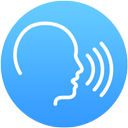







When driving in Sweden, a vehicle's lights must be on at all times – even in daylight. It is important to know which lights to use in different situations and which light combinations are prohibited.
 A car's lights must always be on during travel
A car's lights must always be on during travel
Daylight: Dipped headlights, daytime running lights or fog lights.
Dawn, dusk or darkness: Dipped headlights or full beam headlights. Fog lights in the event of fog, heavy rain or snowfall. Parking lights if you have parked or are stopped on a road.
Fog, heavy rain or snowfall: Dipped headlights, full beam headlights or fog lights. Rear fog lights are permitted if visibility is reduced due to fog, heavy rain or snowfall and the light does not dazzle drivers behind you.
In the event of fog, heavy rain or snowfall you can be dazzled by your own car's full beam headlights. This is because the light is so powerful and is directed at such an angle that it is reflected back at you from water particles.
Emergency stop: Hazard warning lights. On roads with poor visibility or insufficient lighting you must also turn on the parking lights.
 When visibility is reduced you may turn on the car's rear fog lights, as long as they do not dazzle drivers behind you
When visibility is reduced you may turn on the car's rear fog lights, as long as they do not dazzle drivers behind you
You are not allowed to combine certain lights, as they may be dazzling to other drivers.
The following light combinations are prohibited:
When driving in the dark you should use full beam headlights as often as possible. However, they must not be used:
A road has satisfactory illumination when there are no dark parts on the road, or when it is sufficiently lit so that visibility is not improved by using full beam headlights. However, even if the road is lit by street lamps it still may be permitted to use full beam headlights. For example, if it is dark outside and you are driving on a street with poor lighting, it may be appropriate to use full beam headlights, provided you do not dazzle another driver.
 You must not use full beam headlights when driving so close behind another vehicle that the driver may be dazzled
You must not use full beam headlights when driving so close behind another vehicle that the driver may be dazzled
When you are using full beam headlights and approach a junction it may also be appropriate to dip the headlights, to avoid dazzling drivers on the intersecting road.
Note that you do not need to dip the headlights for pedestrians. When meeting or passing pedestrians in the dark it is actually safer to keep the full beam headlights on as they make it easier to see the pedestrians properly. Besides, pedestrians only have to avert their eyes to avoid being dazzled.
 You do not need to dip the full beam headlights for pedestrians
You do not need to dip the full beam headlights for pedestrians
The full beam headlights can, in the dark, be used as a sort of "light horn" by quickly flashing them on and off. Just as with the regular horn, you should only use the light horn if needed to avert a dangerous situation. For example, if you meet an oncoming vehicle driving against traffic.
Front: Two white reflectors. If the trailer is wider than 160 cm, two lights are also required.
Sides: At least one orange light and one orange reflector on each side. If the trailer exceeds six metres, more lights and reflectors are required.
Rear: Two red rear lights and brake lights, two red triangle reflectors, a white light that illuminates the registration plate and indicators on each side.
Hazard warning lights may be used on the towed car, but not on the towing vehicle. If the towed car's lights are broken, the car must be marked during dark or foggy conditions.
 Hazard warning lights may only be used on the towed car
Hazard warning lights may only be used on the towed car